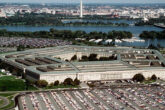January 17, 2017
Why America’s Space Launch Must be Competitivead
The Sept. 1 pad explosion that resulted in SpaceX losing a Falcon 9 rocket and the associated commercial communications satellite may have been frustrating to those responsible for the mission or financial costs, but looking at the data and trend analysis associated with space launches gives a reason to have confidence that SpaceX will successfully return to space with a launch on Saturday, Jan. 14. Moreover, there should be broad encouragement for such a fast and robust recovery in that such a highly adaptive and efficient space launch company (or two or three or five) is just what this country needs. The U.S. (to include both government and private industry) needs a competition driven launch industry wherein a healthy free market rivalry brings down cost, promotes innovation, and expands market opportunities. Without competition, the U.S. would continue to face stagnant launch system development, shoulder increasing costs, and accept limited access to space.
Putting people and satellites into orbit around the earth has been, historically, very expensive. What’s more, until 2012 there was very little market incentive to lower costs. However, in this decade new companies like Blue Origin, OrbitalATK and SpaceX created a new market incentive by forming themselves as privately funded companies seeking to join the space launch sector. Before 2012 NASA’s traditional launch partners, Lockheed Martin and Boeing (which merged their launch sectors in 2006 to form United Launch Alliance), were the only private sector U.S. companies to receive government contracts as a launch service. While ULA can proudly point to its perfect launch record, until SpaceXentered the market in 2012, the joint Boeing and Lockheed venture presented static launch vehicle designs and either flat or rising cost curves.
Read the full article at The National Interest.
More from CNAS
-
The Department of Defense’s Breakthrough Nuclear Moment Risks Slipping Away
Unless they act, the Department of Defense’s breakthrough nuclear moment may vanish before it really happens....
By Will Rogers
-
DEFAERO Strategy Series [Apr 09, 25] CNAS' Becca Wasser and Phil Sheers on Revitalizing the U.S. Defense Industrial Base
On this episode of the Defense & Aerospace Report Strategy Series, sponsored by General Atomics Aeronautical Systems, Becca Wasser and Phil Sheers of the Center for a New Amer...
By Becca Wasser & Philip Sheers
-
From Production Lines to Front Lines
Executive Summary The U.S. defense industrial base (DIB) is struggling to meet the demands of the current strategic environment—let alone prepare for a potential conflict agai...
By Becca Wasser & Philip Sheers
-
The Pentagon’s Endangered Brain Trust
In this environment, sound assessments of emerging threats and new ideas to counter them will be especially vital....
By Dr. Andrew Krepinevich, Jr.




